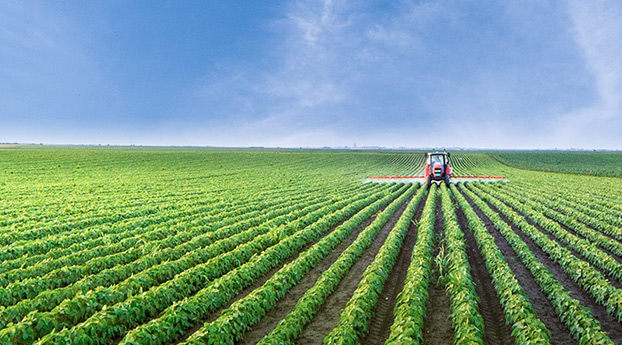People's Daily Online: Chen Lei, Minister of Water Resources: In the first four years of the 12th Five-Year Plan, the problem of safe drinking water for 281 million people has been solved
Release time:2015-09-01 Views:294
Beijing, August 29, 2015 (People's Daily Online) -- The 16th session of the Standing Committee of the 12th National People's Congress (NPC) held a joint group meeting this morning to inquire about the report of the Law enforcement inspection team of the NPC Standing Committee on checking the implementation of the Law on Water Pollution Prevention and Control of the People's Republic of China.
Yuan Si committee member asked at the meeting, it is understood that compared with towns, our rural drinking water safety problem is more prominent, especially rural drinking water supply is large, small drinking water source scattered, water supply facilities construction and operation lack of stable and reliable funding, and even some remote areas farmers directly drinking groundwater and surface water. In recent years, with the support of the state, centralized water supply facilities have been built in some areas, but there are also local reports that some village-level water supply facilities, especially in the early construction of some single-village water supply projects, still have the problem of "three low", namely, low construction standards, low water supply guarantee rate, low water quality qualification rate. How does the competent department of The State Council evaluate the current situation of rural drinking water safety? What measures will be taken to ensure the safety of drinking water in rural areas and ensure that farmers have access to safe and relaxing water?
Chen Lei, Minister of Water Resources, said that the CPC Central Committee and The State Council attach great importance to drinking water safety. Since the beginning of the new century, the 11th and 12th Five-Year plans for drinking water safety in rural areas have been implemented to speed up efforts to solve the problem. The Ministry of Water Resources, together with other relevant departments, earnestly implemented the decisions and arrangements of the CPC Central Committee and The State Council, adopted effective measures and intensified efforts to ensure the safety of drinking water in rural areas. The following work has been done:
First, we need to formulate plans in a scientific way. On the basis of solving the problem of safe drinking water for 221 million rural residents during the 11th Five-Year Plan period, the Ministry of Water Resources, together with the National Development and Reform Commission, the Ministry of Finance, the Ministry of Environmental Protection and the Commission of Health and Family Planning, formulated the plan for the construction of the National Safe drinking Water Project in rural areas during the 12th Five-Year Plan period, which aims to solve the problem of unsafe drinking water for 29,800 rural residents and 41.52 million rural teachers and students. Provincial-level plans and county-level implementation plans have also been formulated and implemented year by year.
Second, we will increase investment. Investment in drinking water safety projects in rural areas is jointly borne by the central government, local governments and the people who benefit from them. The central government applies differentiated investment subsidy standards and subsidy policies. The central government grants 33\%, 60\% and 80\%, respectively, to the eastern, central and western regions. During the 12th Five-Year Plan period (2011-2015), the central government allocated 121.5 billion yuan for safe drinking water in rural areas, and local governments allocated more than 60 billion yuan in supporting funds through various channels. In terms of funding arrangement, central government investment will focus on supporting the central and western regions, and give priority to old revolutionary base areas, ethnic minority areas and poverty-stricken areas. During the first four years of the 12th Five-Year Plan (2011-2015), a total of 48.1 billion yuan was allocated to 832 impoverished counties, ensuring safe drinking water for 115 million rural residents in those counties.
Third, we will solve special difficulties. In the course of the implementation of the 12th Five-Year Plan, the Tibetan areas in the four provinces, the Xinjiang Uygur Autonomous Region and the Xinjiang Production and Construction Corps, as well as the Three Gorges Reservoir area in Chongqing and the Dongting Lake District in Hunan Province, all involving 5.67 million people, were reported to have serious problems that were not planned. On the basis of the previous work, the central government allocated special funds and raised subsidies. This year, The State Council has made simultaneous decisions to ensure the safety of drinking water for 5.67 million people in severe poverty, and smooth progress has been made. At the same time, the Tibet Autonomous Region coordinated with the National Development and Reform Commission to allocate 495 million yuan to ensure safe drinking water for over 1,400 monasteries, 32,300 monks and nuns, and more than 60,000 people who have temporary water supplies.
Fourth, we will speed up construction. The central and local governments have taken effective measures to speed up the construction of projects to ensure safe drinking water in rural areas. In the first four years of the 12th Five-Year Plan Period (2011-2015), drinking water safety for 281 million people has been addressed, and this year, we plan to provide safe drinking water for another 58.67 million rural people. According to statistics on August 20, the central planning investment has been 85 % completed, solved the problem of drinking water safety for 42.62 million people, accounting for two thirds of the plan, and will be completed by the end of this year.
Fifth, pay attention to water source protection. The Ministry of Water Resources and the Ministry of Environmental Protection jointly issued the Guiding Opinions on Strengthening the Protection of Drinking Water Sources in Rural Areas, clarifying the responsibilities of local governments for the protection of drinking water sources in rural areas, defining the tasks for the delineation of drinking water reserves and the scope of guidance for rural drinking water sources, and requiring that the delineation of protected areas and the scope of protection for drinking water sources in rural areas be completed by the end of 2016. At present, 75 % of the project counties have completed the demarcation of protection areas for centralized water supply projects for more than 10,000 people, and 63 % of the project counties have completed the demarcation of protection areas for centralized water supply projects for more than 1,000 people.
Sixth, we will strengthen the guarantee of water quality, requiring all localities to build and put into use water purification and disinfection facilities at the same time as drinking water safety projects. Water quality laboratories will be set up in water plants with a population of more than 10 million tons, and the central government will allocate funds to support the construction of 2,326 regional water quality testing centers, covering more than 2,400 counties. This work began last year and will be completed and put into operation by the end of this year. Through self-inspection, random inspection, inspection and other measures to strengthen drinking water quality monitoring. According to the statistics of the Department of health and family planning, in recent years, the rate of rural drinking water quality up to the standard has increased year by year. Under the condition of expanding the monitoring scope and increasing the detection index, the rate of water quality up to the standard has increased from 44\% in 2010 to 56\% in 2014, and is expected to reach 60\% by the end of this year.
Seventh, to improve the long-term mechanism, in accordance with the requirements of completed, well managed, affordable and long-term benefits, the county as a unit to establish a rural drinking water safety project management institutions, improve the project management mechanism, the management and protection of the main body, responsibility and management personnel, strengthen personnel training, to promote professional management and social services by large, small, share cooperation, water users participation in management and other ways. At present, 88 % of the project counties have established county-level rural water supply management institutions, 47 % of the project counties have established county-level rural drinking water safety project maintenance fund, at the same time through the reasonable determination of water supply price, promote the reform of water price according to local conditions, promote the sound operation of rural drinking water safety project.
Eighth, we will earnestly implement our responsibilities. It has worked with relevant departments to formulate measures for the management of drinking water safety in rural areas, defined the responsibilities of relevant central departments, signed responsibility letters with provincial governments for ensuring drinking water safety in rural areas, and required all local governments to strictly implement the system of responsibility of local administrative heads, break down the responsibilities at various levels, and publicize them to the public through the media. We intensified supervision, inspection and auditing of drinking water safety in rural areas. We will promptly urge local governments to make corrections when problems are discovered, and ensure that the responsibilities and measures for ensuring drinking water safety are fully implemented.
Chen Lei said that the targets and tasks of the 12th Five-Year Plan for safe drinking water in rural areas will be completed as scheduled by the end of this year, and the drinking water safety problems of 305 million rural residents and 41.52 million rural teachers and students will be solved in five years. The rate of centralized water supply in rural areas has reached over 80\%, and the penetration rate of tap water in rural areas has reached 75\%. The water situation of our country determines that ensuring rural drinking water safety is a long-term and dynamic task. During the 13th Five-Year Plan period, we will continue to implement the project to consolidate and improve the safety of drinking water in rural areas. In three years, we will focus on solving the problems of low construction standards, unstable water supply and low water quality, so that rural residents can drink cleaner, safer and more secure water.
(Excerpt from China Water-Saving Irrigation Network)

















